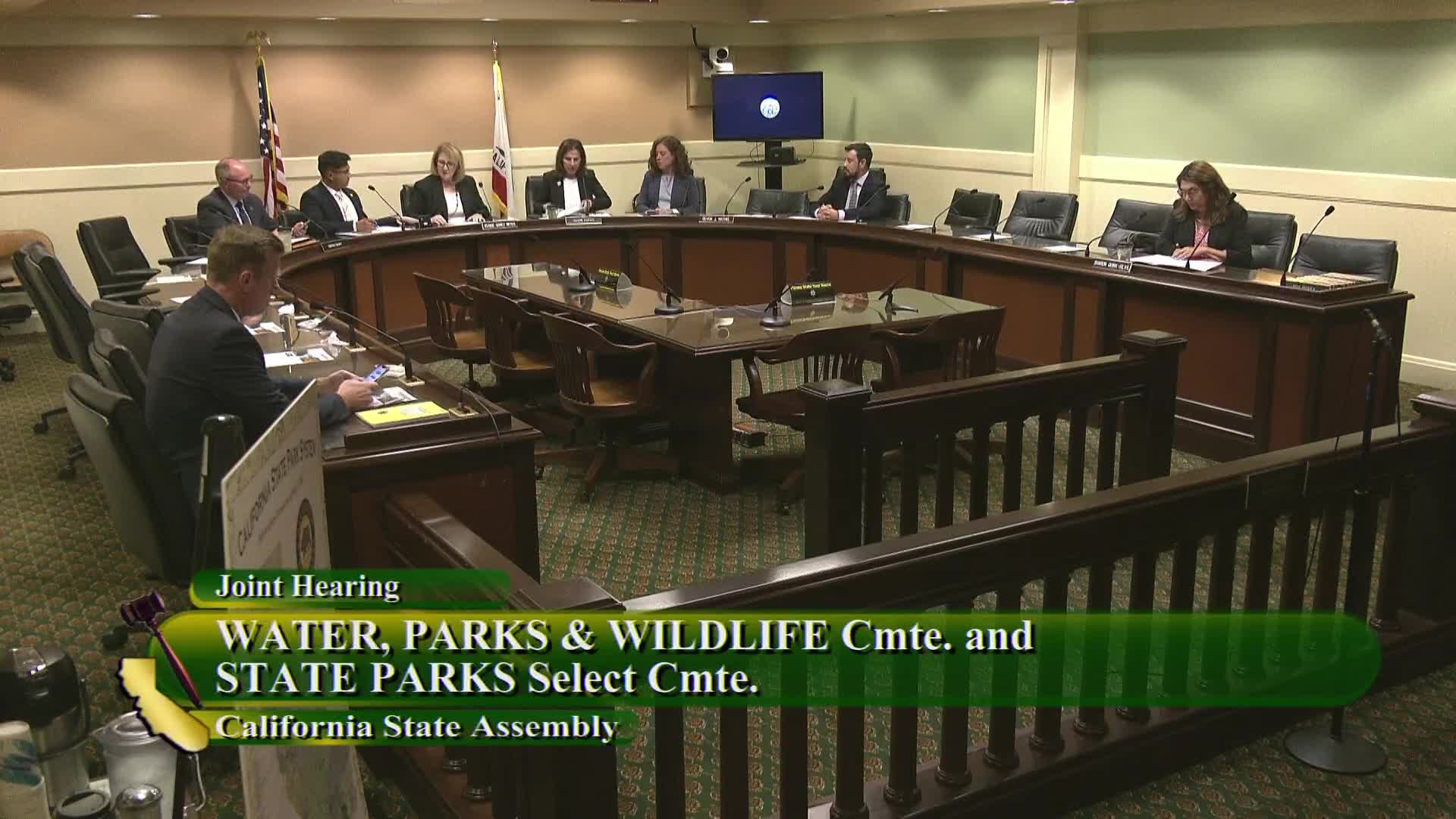California State Parks tackles climate change with bold strategies
August 13, 2024 | California State Assembly, House, Legislative, California

This article was created by AI summarizing key points discussed. AI makes mistakes, so for full details and context, please refer to the video of the full meeting. Please report any errors so we can fix them. Report an error »

During a recent government meeting, officials from California's Natural Resources Agency discussed the state's proactive approach to climate resiliency, emphasizing the critical role of state parks in addressing the impacts of climate change. Jay Chamberlain, Chief of the Natural Resources Division for California State Parks, and Madeleine Drake, Assistant Secretary of the California Natural Resources Agency, highlighted the diverse ecosystems managed by the state park system, which spans from rainforests to deserts and coastlines.
Chamberlain noted that California is already experiencing significant effects of climate change, including increased heat waves, prolonged droughts, altered precipitation patterns, and heightened wildfire risks. He underscored the importance of conservation strategies aimed at protecting these natural resources for future generations, stating that the state parks are uniquely positioned to lead in climate adaptation efforts.
The discussion included a focus on the state's newly adopted sea level rise adaptation strategy, which aims to mitigate the risks posed by rising sea levels to California's extensive coastline. Chamberlain pointed out that over 100 coastal units are under the stewardship of state parks, with millions of visitors relying on these areas for recreation and biodiversity. He warned that, according to state-sponsored science, two-thirds of Southern California's beaches could be lost by 2100 if current trends continue.
In addition to addressing sea level rise, the meeting also covered ecosystem restoration and wildfire resilience initiatives. Chamberlain explained that California's state parks are actively restoring degraded ecosystems and managing landscapes to reduce wildfire risks, a response to over a century of fire suppression practices that have contributed to the state's wildfire crisis.
The officials emphasized the importance of public education in fostering awareness about climate change and the actions being taken to combat it. They also highlighted the integration of climate change considerations into all aspects of park management and planning, aligning with broader state goals for equity and access to natural resources.
Overall, the meeting underscored California's commitment to advancing climate resilience through a multifaceted approach that includes ecosystem management, public engagement, and strategic planning to safeguard the state's diverse natural heritage against the ongoing challenges posed by climate change.
Chamberlain noted that California is already experiencing significant effects of climate change, including increased heat waves, prolonged droughts, altered precipitation patterns, and heightened wildfire risks. He underscored the importance of conservation strategies aimed at protecting these natural resources for future generations, stating that the state parks are uniquely positioned to lead in climate adaptation efforts.
The discussion included a focus on the state's newly adopted sea level rise adaptation strategy, which aims to mitigate the risks posed by rising sea levels to California's extensive coastline. Chamberlain pointed out that over 100 coastal units are under the stewardship of state parks, with millions of visitors relying on these areas for recreation and biodiversity. He warned that, according to state-sponsored science, two-thirds of Southern California's beaches could be lost by 2100 if current trends continue.
In addition to addressing sea level rise, the meeting also covered ecosystem restoration and wildfire resilience initiatives. Chamberlain explained that California's state parks are actively restoring degraded ecosystems and managing landscapes to reduce wildfire risks, a response to over a century of fire suppression practices that have contributed to the state's wildfire crisis.
The officials emphasized the importance of public education in fostering awareness about climate change and the actions being taken to combat it. They also highlighted the integration of climate change considerations into all aspects of park management and planning, aligning with broader state goals for equity and access to natural resources.
Overall, the meeting underscored California's commitment to advancing climate resilience through a multifaceted approach that includes ecosystem management, public engagement, and strategic planning to safeguard the state's diverse natural heritage against the ongoing challenges posed by climate change.
View full meeting
This article is based on a recent meeting—watch the full video and explore the complete transcript for deeper insights into the discussion.
View full meeting
